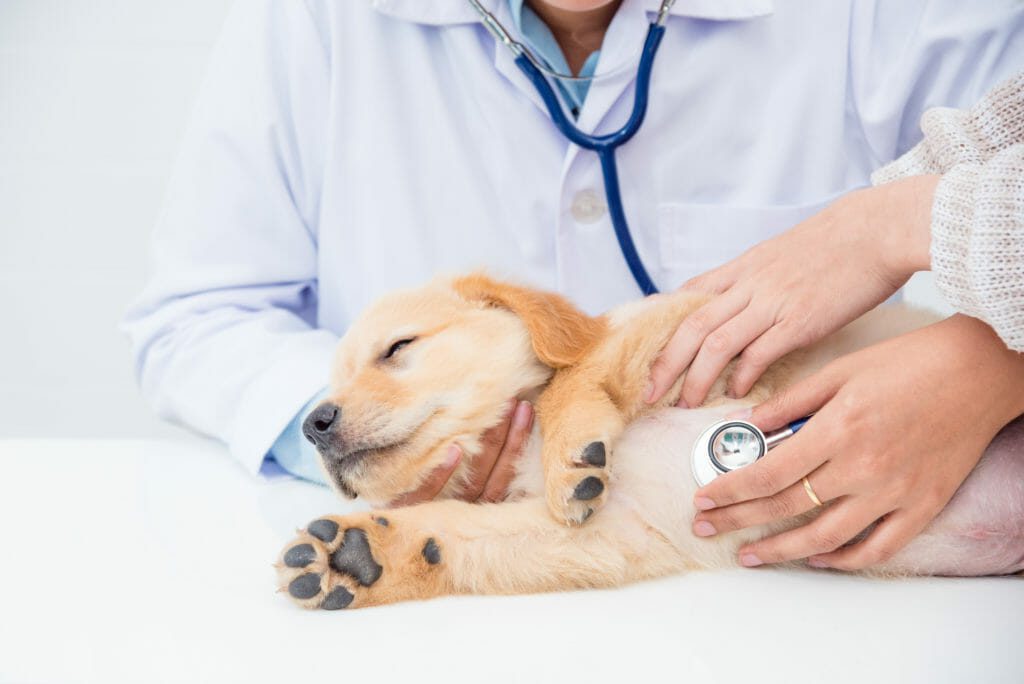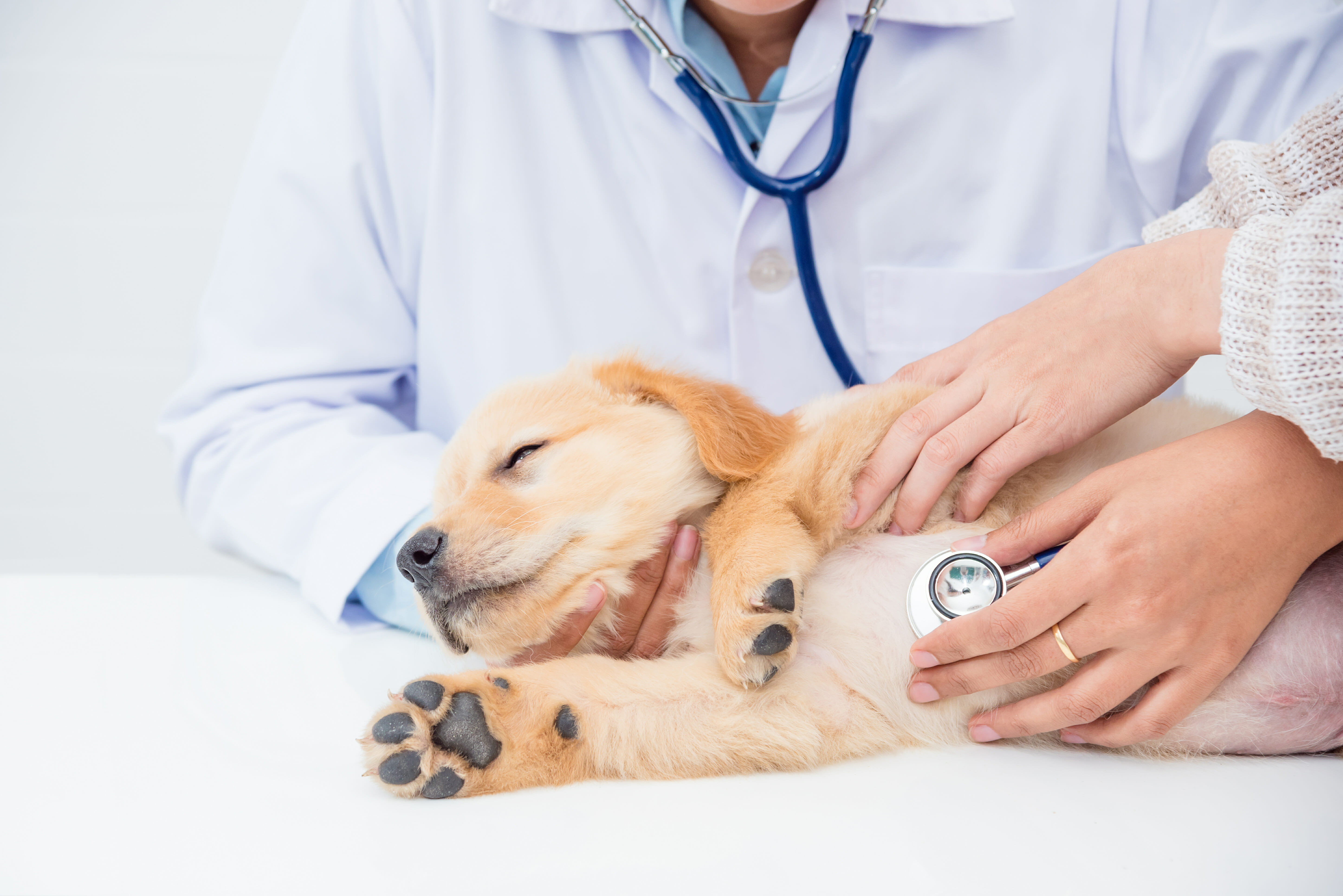What is Dog Bloat?
“The Mother of All Emergencies”
 There are many problems and diseases that can be considered an emergency, but only one is so severe that it has been classified “the mother of all emergencies.” This is the gastric dilatation and volvulus – the bloat.
There are many problems and diseases that can be considered an emergency, but only one is so severe that it has been classified “the mother of all emergencies.” This is the gastric dilatation and volvulus – the bloat.
WHAT IS BLOAT?
To understand what this is you must first know a little about the normal anatomy of a dog. The normal stomach sits high in the abdomen and holds a small amount of gas, food and mucus. It receives food from the esophagus above and empties into the small intestine below. There are normal rhythmic contractions along the entire gastrointestinal tract helping the food and gas slowly move through. In the bloated stomach, gas and/or food distends the stomach many times its normal size. This stretch is extremely painful. Most often with this extension we also see a twisting of the stomach as well. This rotation or volvulus results in the stomach cutting off its own blood supply but also the exit to the stomach. The spleen, an organ that lies in close proximity to the stomach often gets twisted in this scenario as well ultimately losing its blood supply. If the stomach distends enough it can put pressure on the large veins in the body that supply the heart resulting in circulatory shock. A dog can die within hours unless treated immediately.
INCREASING RISK FACTORS:
Deep Chested Dogs (Great Dane, St. Bernard, Weimaraner, Greyhound, Setter Breeds)
Dogs weighing greater than 99lbs
Increased age
Eating Rapidly
Exercise heavily shortly after meal
Feeding from an elevated food bowl
DECREASING RISK FACTORS:
Including canned food in diet
Eating two or more meals a day
Feeding a dry food containing a calcium-rich meat meal listed in first four ingredients
Happy go lucky dogs
SIGNS:
The most obvious symptom of bloat is a distended stomach or abdomen. The pet seems to be in pain. May make multiple attempts to vomit and be unproductive. They might pant, be pacing or have pale gums.
TREATMENT:
If you suspect your dog is experiencing symptoms of bloat, please seek immediate veterinary attention. Initially the stomach will be decompressed. This can sometimes be done with a stomach tube, but may ultimately need to be done in surgery. The patient will also be treated for shock at the same time. There are still high risk factors associated with all these procedures and the survival rate depending on the severity of the case.
PREVENTION:
Prevention gastropexy is an elective procedure that can be done during the time of spay or neuter to high risk breed dogs. The gastropexy is a surgery that tacks the stomach to the body wall which drastically decreases the stomachs ability to twist. The stomach can still bloat, but would be less likely to twist in this case scenario. It is definitely something to consider in high risk breeds.
For more information please contact Traveling Tails Veterinary Clinic at (210) 495-8245.


